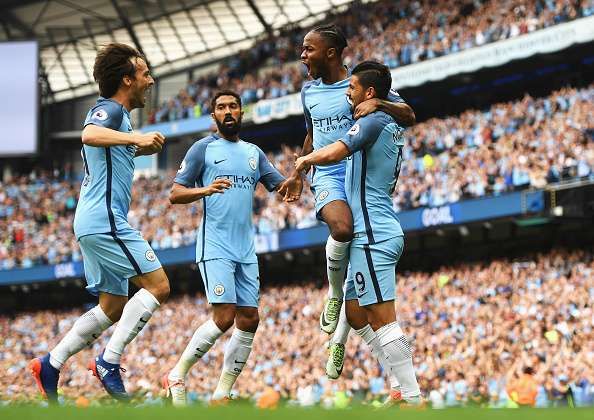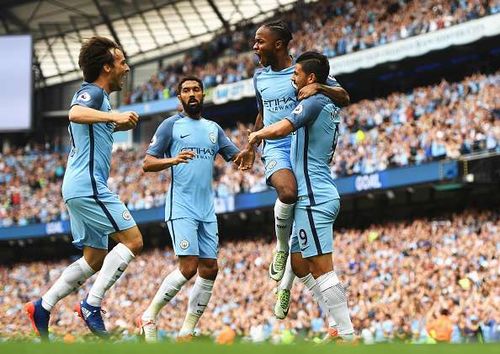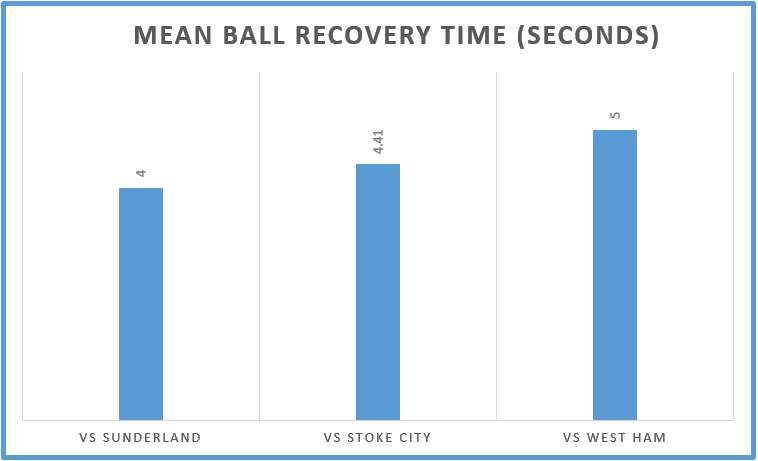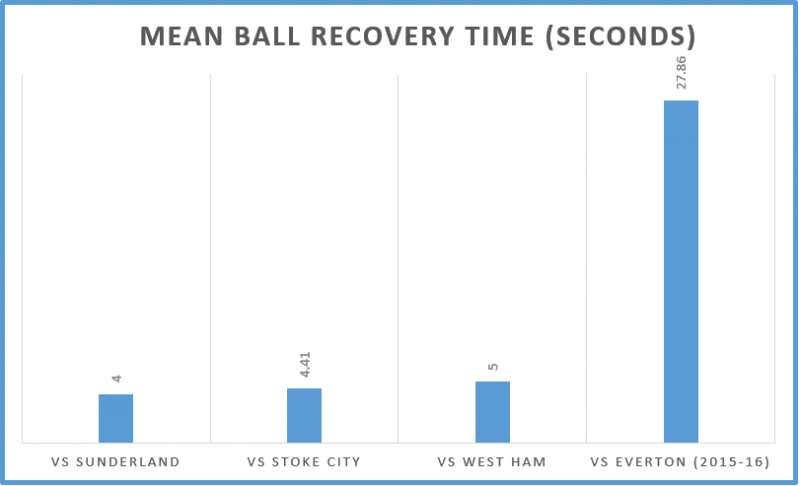
Pep Talk-07: Manchester City's counter-pressing under Guardiola
Pep Guardiola’s arrival seems to have brought a new lease of life to Manchester City. There’s an apparent freshness about the club’s playing style which can be sensed so easily. Manchester United have done well so far under Jose Mourinho. Antonio Conte’s Chelsea have won three on three. But if there’s some sort of thrill in the Premier League right now, then that’s largely due to Guardiola’s transformation of City in a creative, exciting and step-by-step fashion.
In his very first game in charge of Manchester City, we saw Guardiola deploy his wingbacks in the central midfield region, more central than Philipp Lahm and David Alaba in Bayern Munich, and thus effectively converting them to inverted fullbacks.
Guardiola’s team has dominated the ball against all the opponents and has averaged 67% possession in the first three games in the league. In these three games, Manchester City has completed an average of 587 passes and the pass completion stands at a whopping 85%.
Clearly, these are some of the basic elements that draw a thick line and show the disparity in the playing styles of Manuel Pellegrini and Guardiola.
Stopping at this point and just praising the Catalan coach’s recent success doesn’t make justice to what Guardiola is doing to his squad to be a “fully functional Pep Guardiola team”. In order to dwell deeper into this matter, I will be discussing Manchester City’s counter-pressing under Pep Guardiola.
Counter-pressing is the method of applying pressure on the opposition as soon as the ball is lost. The aim is to win the ball back quickly or force the opposition to negative transition. The whole idea of counter-pressing is to prevent the opposition from making counter-attacks.
Counter-pressing has been one of the core elements of Guardiola’s past teams. Teams in Bundesliga, for example, Roger Schmidt’s Bayer Leverkusen, adopt this element into their playing styles.
Counter-pressing is preceded by possession loss which makes the opponents move into the transition phase from defense to attack and thus deep defending teams usually lose their shape and compactness when counter-pressed. When the ball is won in such circumstances, the counter-pressing team can find itself facing the opposition that has open spaces between the lines – which the counter-pressing team can take good advantage of.
For a possession based team, counter-pressing is an essential mechanism to stop teams from counter-attacking. Facing a reactive opponent defending with a low block, it becomes very crucial for any possession based team to counter-press. Else, the opposition will have space behind the defensive line to attack and with the use of some pacey forwards can wreak havoc.
It is not just the breakdown of the low block or compactly defending teams that is important but also defending against counter-attacks. Manchester City is doing just that! Guardiola’s side in Manchester has undergone quick transformation and was seen counter-pressing Sunderland in the middle third to win back possession and restart attacks.
How do we know that Manchester City is counter-pressing? What are time gaps between possession loss and recovery?
Well, the first and foremost distinctive factor about counter-pressing is the instantaneous response of the possession based team, here Manchester City, to losing the ball. Some teams play with retreat defence. Such teams rarely press quickly after losing ball possession and focus on just falling back to guard the zones in front of the 18-yard box.
Manchester City, on the other hand, is quick to respond to losing ball possession. But there should be a quantifiable value so as to back my saying. I have assumed that since City players counter-press, they should be able to win the ball back within nine seconds of losing it to the opposition. The usual value taken into account by the football stats experts is seven seconds. But since counter-pressing is new to City players and it still takes some time to perfect it, I have just extended the ball recovery time by two seconds.
So I started collecting data from the first three Premier League games under Guardiola. Note that since all the time interval measurements have been done manually, my data is not perfectly accurate. A noise-free data set obtained from companies like Opta might vary from my data set. But the data collected by me is more than sufficient to establish the fact that Manchester City counter-press under Guardiola and to quantify it.
I noted the time interval between losing the ball and recovering it back by counter-pressing and also plotted the point of ball recovery on a pitch tracker for Sunderland and West Ham games. Since more than one player commits to counter-press after losing the ball and also since it is the ball recovery that matters, I have just plotted ball recovery points.
Against Sunderland, City made 16 counter-pressing actions after which the players recovered the ball back to attack again. The mean ball recovery time was four seconds. Against Stoke City, there was an increase in the number of counter-pressing actions as City players recovered the ball 22 times and had a mean recovery time of 4.41 seconds. Versus West Ham, the mean time for ball recovery was five seconds and the ball was won back 14 times.
These numbers mean nothing unless they are compared to similar data collected from Manchester City’s games under Pellegrini. I picked City’s game against Everton last season and carried a similar analysis on the first half performance of the Citizens. City recovered the ball only seven times by pressing. Of the seven ball recovery actions, only three times did they manage to get the ball back within nine seconds. The mean recovery time was 27.86 seconds.
This shows how passive Manchester City was in the “no ball possession” phase under the Chilean. Under Guardiola, the players are very much active and are keen to force the opponents to make wrong decisions and concede the possession back to City.
Compared to Red Bull Salzburg under Roger Schmidt, these numbers fall short by miles. Schmidt’s team outperformed Guardiola’s Bayern Munich in a friendly game when they scored three goals in the first half itself thanks to relentless pressing. This involved 21 times ball possession recovery by counter-pressing in the first 45 minutes itself! The mean time for ball recovery was 4.67 seconds, which shows how consistent the players were while counter-pressing.
21 times in 1st half = Ball recovery by counter pressing once in every 2.14 mins. Mean Ball Recovery Time by counter pressing was 4.67 sec.
— Nachiketh Ramesh (@NachikethRamesh) July 2, 2016
But from the perspective of ineffectively pressing Premier League clubs, this is a huge leap which puts City one level above Mauricio Pochettino’s Tottenham and in the same bracket as Jurgen Klopp’s Liverpool.


